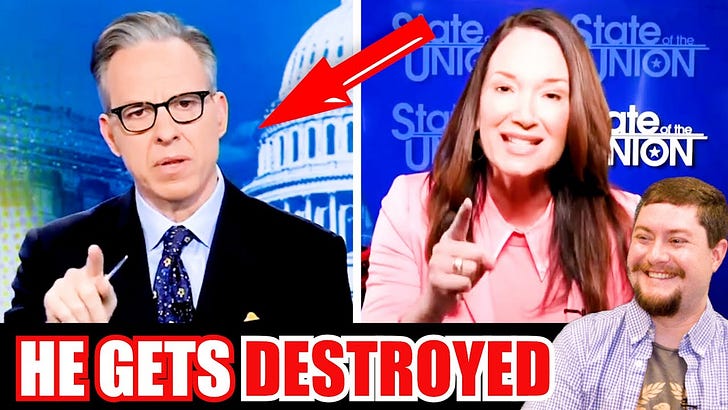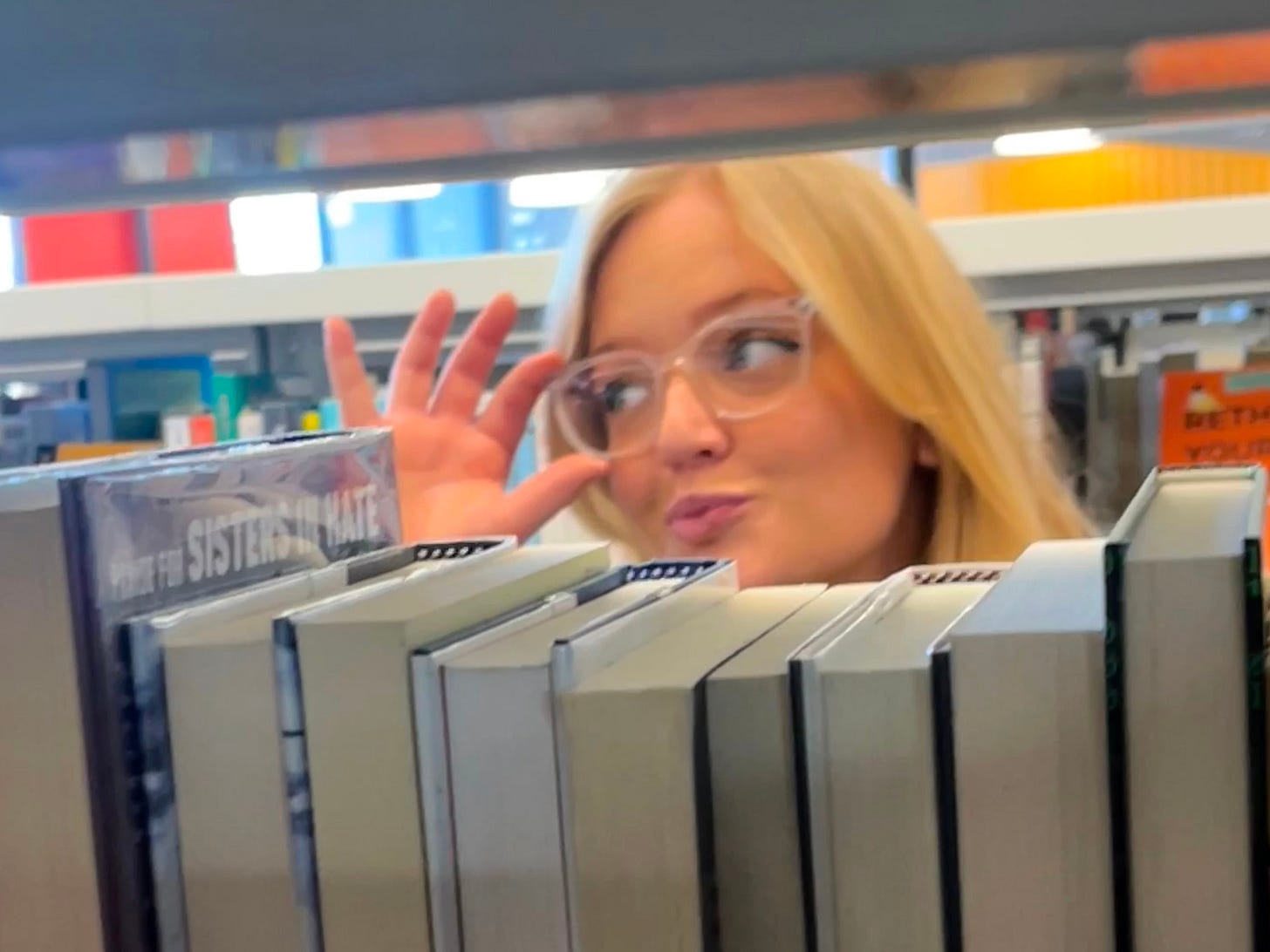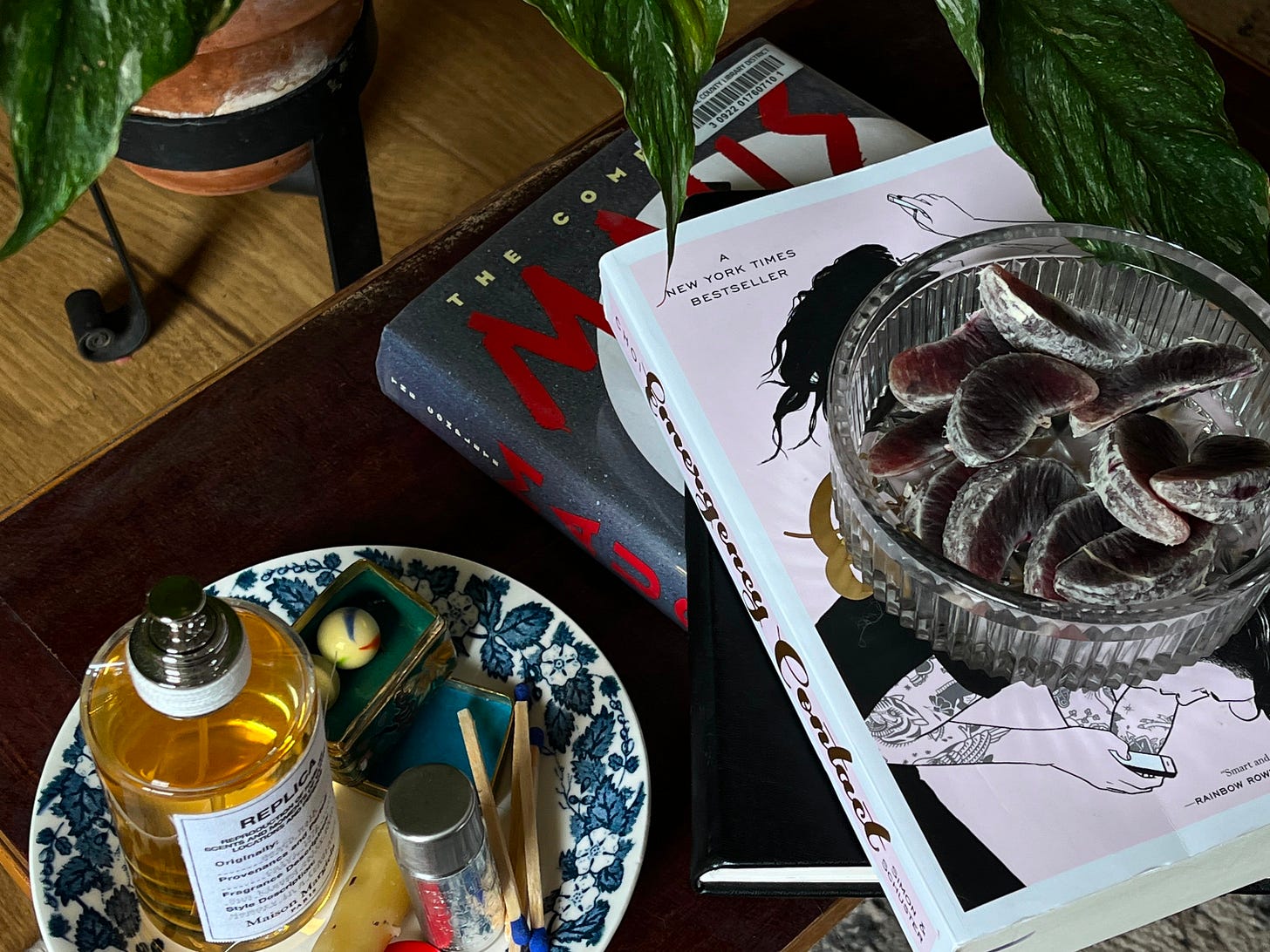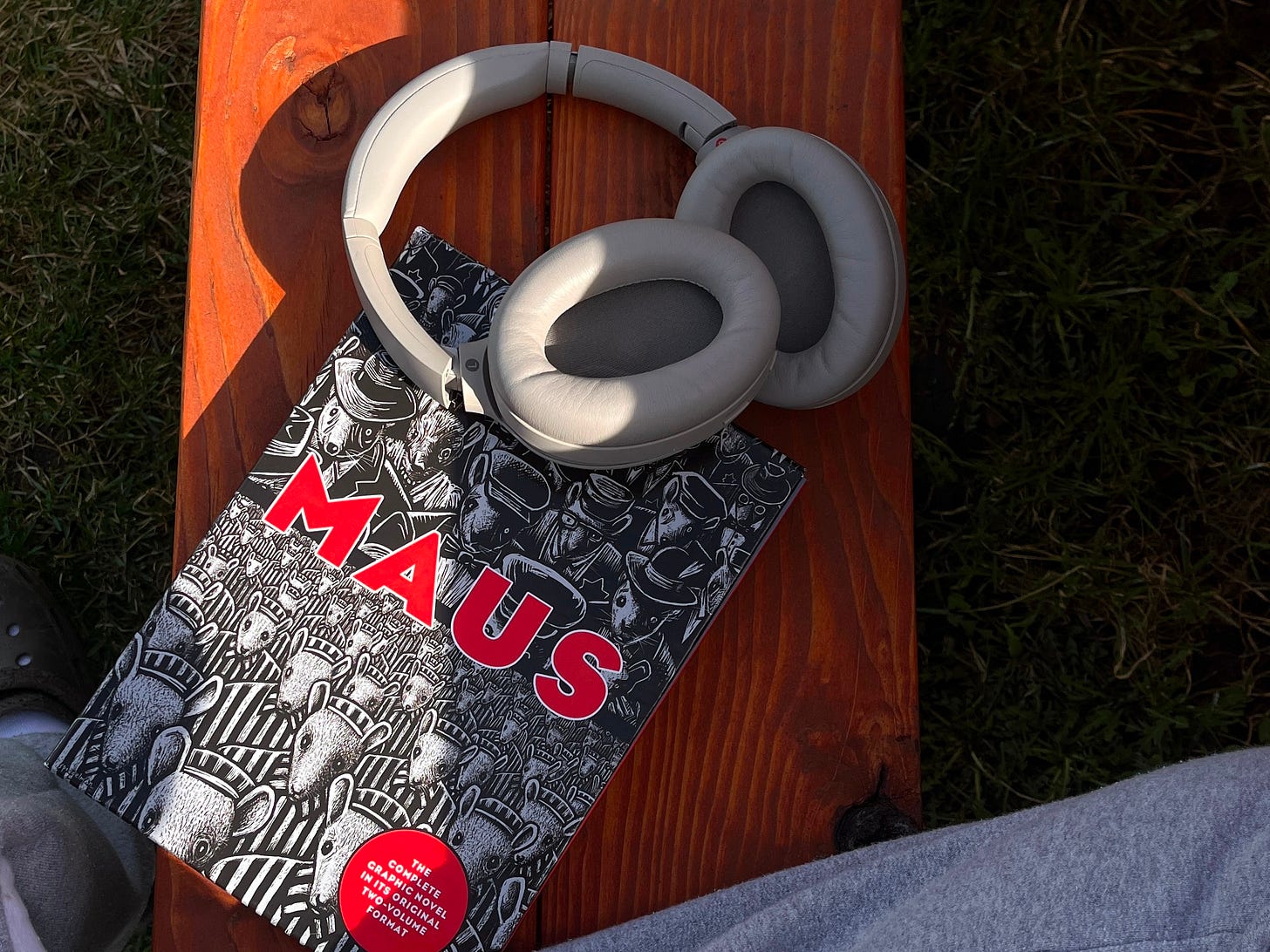
My hometown banned over 140 books from their library shelves. I’m spending the next month reading from that list.
I was-and frankly, still am- a library kid. Spending the afternoon among colorful titles, resolving to “read every book in the whole library” was a common occurrence. Sitting cross-legged on the hard, matted carpet, reading books for free is where I found my creativity.
While “Diary of a Whimpy Kid” isn’t on many people’s “Books that Changed My Life” lists, I can tell you it inspired me to start a journal and create cartoons of my little life.
Recently a library opened within walking distance of my house, rekindling my habit of a quick library visit. Nostalgia drove me to Google my childhood library, where I expected updates on the new renovation (I knew the roof caved in from heavy snow). Instead I was greeted with articles on the fancy new “mature section” proposal. I quickly realized this was just another way for censorship and removing access to challenged Young Adult books from their target audience.
I think about my future kiddos, a lot. I loosely prepare for these butterfly babies in small ways.
They say there is no perfect time, but like many millennials, I take the responsibility of potentially becoming a parent seriously. And let’s be honest, becoming someone’s parent is really intimidating. I’ve read mommy books, looked into school districts and when I made a birthday crown for my nephew’s first birthday party, I made one more-just in case.
So, when I bought a stack of exiled YA books from a town over, for a future teenager I’m not even sure I’ll have, my justification was simple: I’ll read them. I haven’t read from the YA realm for about ten years and if a book is being challenged it’s a sure fire way to pique my interest. If I get to the stage of life where I have a 16 year old who reads, then I can add this stack to their bookshelf. It’s a win-win. And let’s be real-I’ll take just about any excuse to buy more books.
I’ll admit, I went into this experiment expecting most of these books to be fan fiction adjacent. Point of contact being Harry Styles/Louis Tomlinson saga from AO3, which has apparently cemented itself in my mind as reference for “teen media”. But as I worked through the first book in my new stack (heavily ex-library books from Florida and Texas), I realized these books would be nothing like that. No offense Larry Stylinson.
Emergency Contact by Mary H.K.Choi, with its pastel pink cover is about a young woman and young man who develop an intensely innocent texting relationship, after Penny witnesses Sam have a panic attack. My blood boiled as I read page after well written page, discussing complex topics in a nuanced, non-graphic way. Was I missing something?
Idaho flags this book with “contains sexual activities; sexual nudity; and controversial racial commentary; and hate involving racism.” Sounds spooky. Not going to lie, it also sounds like it came from someone who didn’t read the book and just read out-of-context blurbs.
Idaho ranks among lowest in the country for education. I’m not unsurprised at the crude distillation, having grown up in the North Idaho School system myself-I can say firsthand that critical thinking wasn’t exactly emphasized. I kept reading Emergency Contact, waiting for the supposed atrocities to appear.
In one scene, Penny’s new roommate says: “You’re so organized. I bet you’re a math genius or something. Let me guess—you’re an overachieving Asian kid who skipped ten grades.”
Opp! Racism spotted.
Penny responds “You don’t get to be bitchy for no reason, and you don’t get to be racist to me. And certainly not in such a lazy, derivative way”.
Oh there’s the context. The book spoon feeds to the young audience that the racist remark was hidden under the guise of teasing. This scene teaches readers that they can honor their feelings when confronted with uncomfortable remarks and provides a play-by-play of how interactions can unfold in the real world-safely, within the pages, before facing them in life.
I later, looked up where Idaho referenced the “hate involving racism” flag. It was for this quote: “Well, he’s not white.” he said. “Which helps”.
Enough said, Idaho.
Sitting on the couch with my husband, I mulled over the banned book issue for the 500th time in the past few weeks “I don’t understand what the goal is here,” I said. “Do they want their children to turn 18 not knowing what racism can look like? Is the plan for them to get their first job not being able to recognize when the manager’s “flirting” is actually sexual harassment and should be reported? Yes, lets send the children off to prom knowing nothing about their bodies or consent.”
Banning books with ‘mature topics’ doesn’t prevent teenagers from encountering tough issues-it just forces them to seek information elsewhere. (Remember Omegle circa 2011? So does teenage me.)
Swiping through a rando’s video on Tik Tok rather than reading a well thought out novel, doesn’t feel like we’re headed in the right direction. Teens can drive, get jobs, and in some places, even get married, but sure let’s panic over them reading about racism and relationships. Why don’t we throw them into the deep end with zero prep for adulthood and count our misguided use of censorship as good parenting. No, that feels cruel.
Mary Choi references Maus, a graphic novel written in the 1970s about a man recounting his father’s time in Auschwitz, depicting Jewish people as mice and Nazis as cats. Choi uses Maus to highlight the importance of discussing difficult topics with young people: “She knew Maus was going to be formative, not that she was going to become a career criminal, more that she felt destined to make something that made someone else feel how she did when she read it.”
Maus was pulled from Athens, Tennessee shelves in 2022 after backlash. “It shows people hanging, it shows them killing kids-why does the education system promote this kind of stuff? It is not wise or healthy” said Tony Allman, a school board member. But just as Emergency Contact doesn’t promote racism, Maus doesn’t promote genocide. These books use storytelling to educate and warn. They force us to acknowledge the harder parts of humanity, because if we don’t, we won’t recognize history repeating itself.
This hometown issue would have been easier to roll my eyes at if these were frivolous kissy kissy books (While I think those have merit, as well). But they’re not. These are intentional, well-thought-out books written by educated adults.
I can empathize with the impulse to blame media when your precious dove comes home smelling like cheap beer or sneaks back through the window after egging a neighbor’s house. But let’s be clear-most the time, if not every time, it’s not the books fault. The reality is, your young person is their own human, who deserves knowledge on how to handle the hard parts of life. Pretending the world is sunshine and roses isn’t protection; it’s control, dressed up with good intentions.
No one is saying we need to teach toddlers to read by handing them a copy of Thirteen Reasons Why.
It would be ridiculous to expect a five-year-old to understand algebra. There is a time and a place for these books. That’s parenting. That’s guidance. Screaming at the county library to ban books? That’s avoidance.
And not the best use of our time.
And maybe, just maybe, if the parents focused on raising self-aware ducklings instead of shielding them from reality, I won’t find myself at a future backyard birthday party, beer in hand, desperately trying not to gouge my eyes out around adults who never took the time to think critically.
A long shot? Probably. But a girl can dream.







































